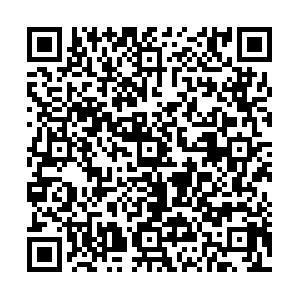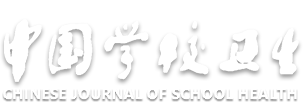Association of sugar-sweetened beverages intake with overweight and obesity among primary and middle school students in Anhui Province
-
摘要:
目的 分析安徽省中小学生含糖饮料摄入情况及不同类型含糖饮料与超重肥胖的关联,为相关部门制定适宜的防控政策提供参考依据。 方法 于2020年10—11月,在安徽省34个县区内采用多阶段整群抽样方法抽取51 069名中小学生进行体格检查和问卷调查。采用主成分分析法提取含糖饮料的偏好模式,并采用Logistic回归模型分析含糖饮料偏好模式与超重肥胖的关联。 结果 调查的学生中,67.75%报告在过去1周曾摄入含糖饮料,含乳饮料为学生摄入最频繁的饮料,39.91%的学生摄入≥1次/周。通过主成分分析法,提取了4种含糖饮料摄入偏好模式,多因素分析结果显示,调整后模式1(碳酸饮料、茶饮料和功能性饮料)、模式4(咖啡饮料)与超重肥胖的发生风险增加相关(OR模式1=1.09,95%CI=1.07~1.11;OR模式4=1.04, 95%CI=1.02~1.05)、模式3(含乳饮料)与风险降低相关(OR=0.97,95%CI=0.95~0.99)(P值均 < 0.05)。 结论 安徽省中小学生含糖饮料摄入频率较高,多种类型含糖饮料与超重肥胖风险增加相关。建议相关部门采取适宜的有效措施减少中小学生含糖饮料的摄入。 Abstract:Objective To analyze the association of consumption of sugar-sweetened beverages (SSBs) with overweight and obesity among primary and middle school students in Anhui Province, so as to provide basis for formulating proper prevention and control policies. Methods From October to November 2020, 51 069 primary and middle school students from 34 counties in Anhui Province were selected by multi-stage cluster sampling method for physical examination and questionnaire survey. Principal component analysis was used to obtain the consumption patterns of SSBs. Logistic regression model was used to analyze the relationship between consumption patterns of SSBs and overweight and obesity. Results In the students surveyed, 67.75% of them reported SSBs consumption in the past week, with milk beverages being the most frequently consumed drinks, with 39.91% of the students consumed more than or equal to once a week, 4 preferred patterns of SSBs intake were extracted by principal component analysis. The result of multivariate analysis showed that pattern 1 (carbonated beverages, tea beverages and functional beverages) and pattern 4 (coffee beverages) were associated with an increased risk of overweight and obesity (OR1=1.09, 95%CI=1.07-1.11; OR4=1.04, 95%CI=1.02-1.05), pattern 3 (milk beverages) was associated with a decreased risk(OR=0.97, 95%CI=0.95-0.99)(P < 0.05). Conclusion The intake frequency of SSBs is high among primary and middle school students in Anhui Province, and the intake of multiple types of SSBs is associated with an increased risk of overweight and obesity. It is suggested that relevant departments take appropriate and effective measures to reduce the consumption of SSBs among primary and middle school students. -
Key words:
- Carbohydrates /
- Beverages /
- Feeding behavior /
- Overweight /
- Obesity /
- Students /
- Regression analysis
1) 利益冲突声明 所有作者声明无利益冲突。 -
表 1 中小学生不同类型含糖饮料摄入频率分布(n=51 069)
Table 1. Consumption frequency distribution of different types of sugar-sweetened beverages among primary and middle school students(n=51 069)
饮料类型 0次/周 1~3次/周 4~6次/周 7次/周 >7次/周 碳酸饮料 31 676(62.03) 16 255(31.83) 1 361(2.67) 1 147(2.25) 630(1.23) 含乳饮料 30 686(60.09) 13 129(25.71) 2 772(5.43) 3 187(6.24) 1 295(2.54) 果蔬汁饮料 38 533(75.45) 10 265(20.10) 841(1.65) 1 028(2.01) 402(0.79) 茶饮料 34 108(66.79) 13 900(27.22) 1 327(2.60) 1 159(2.27) 575(1.13) 功能性饮料 43 180(84.55) 6 537(12.80) 486(0.95) 621(1.22) 245(0.48) 咖啡饮料 46 271(90.60) 3 691(7.23) 451(0.88) 482(0.94) 174(0.34) 植物蛋白饮料 41 680(81.62) 7 599(14.88) 605(1.18) 881(1.73) 304(0.60) 谷物饮料 36 121(70.73) 10 895(21.33) 1 597(3.13) 2 135(4.18) 321(0.63) 注: ()内数字为构成比/%。 表 2 不同模式下中小学生含糖饮料偏好模式的因子载荷值(n=51 069)
Table 2. Factor loading of preference patterns of SSBs among primary and middle school students(n=51 069)
模式 碳酸饮料 含乳饮料 果蔬汁饮料 茶饮料 功能性饮料 咖啡饮料 植物蛋白饮料 谷物饮料 模式1 0.67 0.17 0.40 0.68 0.77 0.14 0.23 0.00 模式2 0.02 0.24 0.57 0.18 0.24 0.10 0.76 0.74 模式3 0.43 0.85 0.18 0.23 -0.12 0.07 -0.02 0.25 模式4 0.04 0.07 0.01 0.08 0.13 0.98 0.10 0.06 表 3 中小学生含糖饮料偏好模式与超重肥胖关系多因素Logistic回归分析(n=51 069)
Table 3. Multivariate Logistic regression analysis of the relationshipbetween preference patterns of SSBs and overweight and obesity among primary and middle school students(n=51 069)
模式 调整前 调整后 OR值(OR值95%CI) P值 OR值(OR值95%CI) P值 模式1 1.09(1.07~1.11) < 0.01 1.09(1.07~1.11) < 0.01 模式2 1.00(0.98~1.01) 0.61 1.00(0.98~1.01) 0.60 模式3 0.97(0.95~0.99) < 0.01 0.97(0.95~0.99) < 0.01 模式4 1.03(1.01~1.05) < 0.01 1.04(1.02~1.05) < 0.01 注:因变量超重肥胖赋值为否=0,是=1。 -
[1] 中国营养学会. 中国居民膳食营养指南(2022)[M]. 北京: 人民卫生出版社, 2022: 66-67.Chinese Nutrition Society. Dietary guidelines for Chinese residents(2022)[M]. Beijing: People's Medical Publishing House, 2022: 66-67. (in Chinese) [2] 联合国儿童基金会. 中国儿童含糖饮料消费报告[M]. 北京: 北京大学医学出版社, 2018: 15-20.United Nations International Children's Emergency Fund. Report on children's consumption of sugar-sweetened beverages in China[M]. Beijing: Peking University Medical Press, 2018: 15-20. (in Chinese) [3] 白英龙, 许志勇, 牛欣, 等. 沈阳市初中生超重肥胖和含糖饮料摄入关联性分析[J]. 中国学校卫生, 2020, 41(1): 113-116. doi: 10.16835/j.cnki.1000-9817.2020.01.030BAI Y L, XU Z Y, NIU X, et al. Correlation analysis between overweight and obesity and intake of sugary drinks among junior high school students in Shenyang[J]. Chin J Sch Health, 2020, 41(1): 113-116. (in Chinese) doi: 10.16835/j.cnki.1000-9817.2020.01.030 [4] 刘忠慧, 徐渴, 孙志颖, 等. 2018年天津市中小学生超重肥胖现状及影响因素研究[J]. 中国慢性病预防与控制, 2020, 28(10): 743-747. https://www.cnki.com.cn/Article/CJFDTOTAL-ZMXB202010007.htmLIU Z H, XU K, SUN Z Y, et al. Study on the current situation and risk factors of overweight and obesity among primary and secondary school students of Tianjin in 2018[J]. Chin J Prev Control Chron Dis, 2020, 28(10): 743-747. (in Chinese) https://www.cnki.com.cn/Article/CJFDTOTAL-ZMXB202010007.htm [5] 卫生部. 学生健康检查技术规范: GB/T 26343—2010[S]. 北京: 中国标准出版社, 2011.Ministry of Health of the PRC. Technical standard for physical examination for students: GB/T 26343-2010[S]. Beijing: Standards Press of China, 2011. (in Chinese) [6] 国家卫生和计划生育委员会. 学龄儿童青少年超重与肥胖筛查: WS/T 586—2018[S]. 北京: 中国标准出版社, 2018.National Health and Family Planning Commission of the PRC. Screening for overweight and obesity among school-age children and adolescents: WS/T 586-2018[S]. Beijing: Standards Press of China, 2018. (in Chinese) [7] 张宏, 吴静, 马吉祥, 等. 四省(市)八地区中学生含糖饮料消费行为的影响因素研究[J]. 中华健康管理学杂志, 2019(3): 231-236.ZHANG H, WU J, MA J X, et al. Factors affecting the consumption of sugar-sweetened beverages among middle school students in eight counties of four provinces (municipality) in China[J]. Chin J Health Manage, 2019(3): 231-236. (in Chinese) [8] 景方圆, 李迎君, 范春红. 中国儿童青少年含糖饮料消费与肥胖的相关性研究[J]. 预防医学, 2018, 30(5): 494-497. https://www.cnki.com.cn/Article/CJFDTOTAL-ZYFX201805017.htmJING F Y, LI Y J, FAN C H. Association between sweetened beverages consumption and obesity in Chinese children and adolescents[J]. Prev Med, 2018, 30(5): 494-497. (in Chinese) https://www.cnki.com.cn/Article/CJFDTOTAL-ZYFX201805017.htm [9] JONES A C, KIRKPATRICK S I, HAMMOND D. Beverage consumption and energy intake among Canadians: analyses of 2004 and 2015 national dietary intake data[J]. Nutr J, 2019, 18(1): 60. doi: 10.1186/s12937-019-0488-5 [10] DELLA C K, FIFE J, GARDEN A, et al. World trends in sugar-sweetened beverage and dietary sugar intakes in children and adolescents: a systematic review[J]. Nutr Rev, 2021, 79(3): 274-288. [11] 胡卉, 柏品清, 邵祥龙, 等. 上海市浦东新区学生含糖饮料消费与超重肥胖的关系[J]. 职业与健康, 2019, 35(6): 761-765. https://www.cnki.com.cn/Article/CJFDTOTAL-ZYJK201906011.htmHU H, BAI P Q, SHAO X L, et al. Association between consumption of sugar-sweetened beverages and overweight and obesity among students in Pudong New Area of Shanghai[J]. Occup Health, 2019, 35(6): 761-765. (in Chinese) https://www.cnki.com.cn/Article/CJFDTOTAL-ZYJK201906011.htm [12] 宋永晶, 邓倩, 杨茂林, 等. 上饶中学生饮料消费行为与超重肥胖的相关性[J]. 中国学校卫生, 2020, 41(4): 591-594. doi: 10.16835/j.cnki.1000-9817.2020.04.029SONG Y J, DENG Q, YANG M L, et al. Correlation between beverage consumption behavior and overweight and obesity among middle school students in Shangrao[J]. Chin J Sch Health, 2020, 41(4): 591-594. (in Chinese) doi: 10.16835/j.cnki.1000-9817.2020.04.029 [13] HARDY L L, BELL J, BAUMAN A, et al. Association between adolescents' consumption of total and different types of sugar-sweetened beverages with oral health impacts and weight status[J]. Aust N Z J Public Health, 2018, 42(1): 22-26. [14] 邓陶陶, 梁栋, 李湖中, 等. 我国市场常见饮料中糖含量调查[J]. 中国食物与营养, 2018, 24(4): 5-8. https://www.cnki.com.cn/Article/CJFDTOTAL-ZGWY201804001.htmDENG T T, LIANG D, LI H Z, et al. Sugar content in commercially available beverages in China[J]. Food Nutr Chin, 2018, 24(4): 5-8. (in Chinese) https://www.cnki.com.cn/Article/CJFDTOTAL-ZGWY201804001.htm [15] 国家质量监督检验检疫总局, 国家标准化管理委员会. 含乳饮料: GB/T 21732—2008[S]. 北京: 中国标准出版社, 2008.General Administration of Quality Supervision of the PRC, Inspection and Quarantine of the PRC, Standardization Administration of the PRC. Milk beverages: GB/T 21732-2008[S]. Beijing: Standards Press of China, 2008. (in Chinese) -

 点击查看大图
点击查看大图
计量
- 文章访问数: 394
- HTML全文浏览量: 174
- PDF下载量: 38
- 被引次数: 0





 下载:
下载: